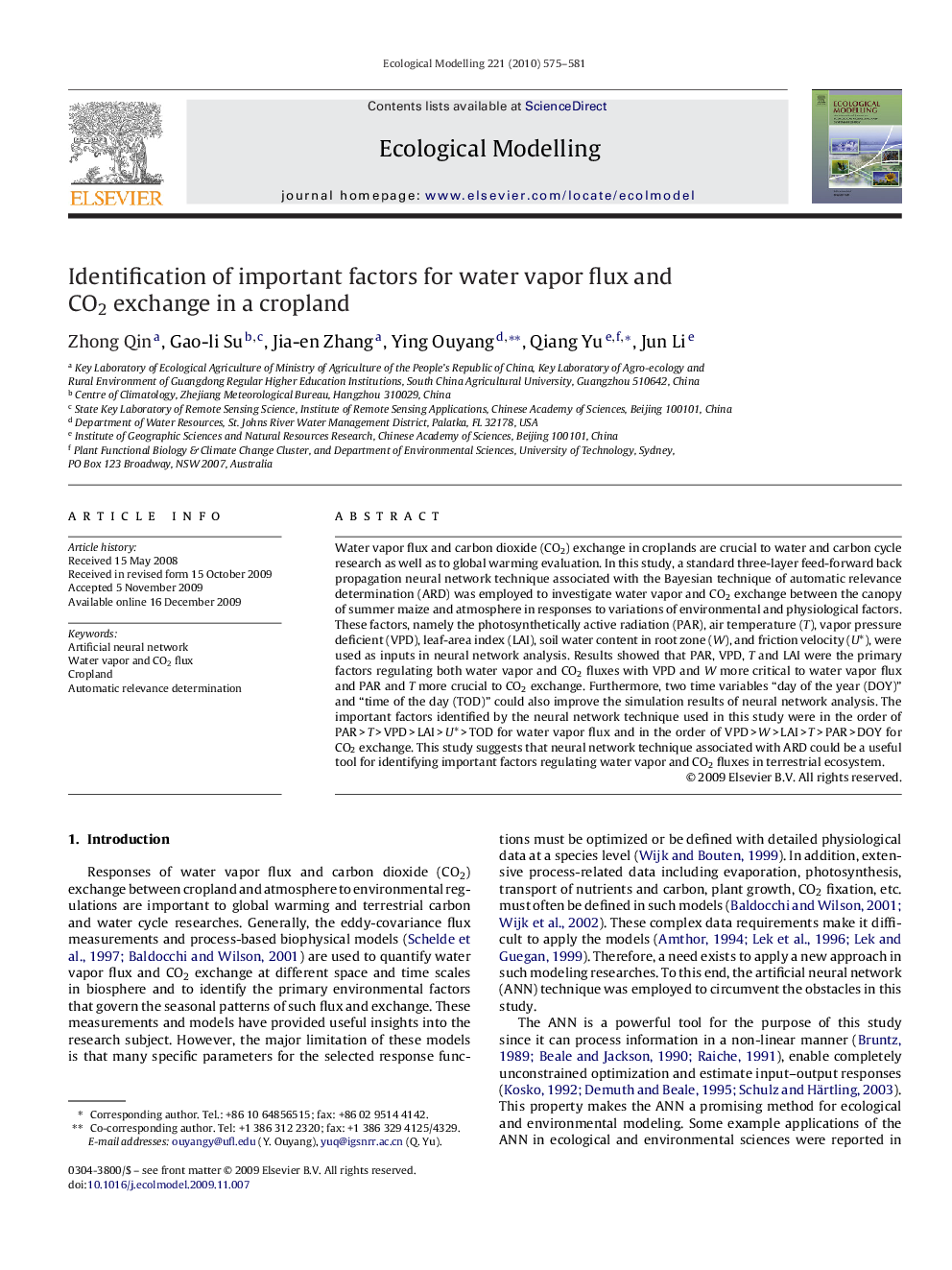| Article ID | Journal | Published Year | Pages | File Type |
|---|---|---|---|---|
| 4377086 | Ecological Modelling | 2010 | 7 Pages |
Water vapor flux and carbon dioxide (CO2) exchange in croplands are crucial to water and carbon cycle research as well as to global warming evaluation. In this study, a standard three-layer feed-forward back propagation neural network technique associated with the Bayesian technique of automatic relevance determination (ARD) was employed to investigate water vapor and CO2 exchange between the canopy of summer maize and atmosphere in responses to variations of environmental and physiological factors. These factors, namely the photosynthetically active radiation (PAR), air temperature (T), vapor pressure deficient (VPD), leaf-area index (LAI), soil water content in root zone (W), and friction velocity (U*), were used as inputs in neural network analysis. Results showed that PAR, VPD, T and LAI were the primary factors regulating both water vapor and CO2 fluxes with VPD and W more critical to water vapor flux and PAR and T more crucial to CO2 exchange. Furthermore, two time variables “day of the year (DOY)” and “time of the day (TOD)” could also improve the simulation results of neural network analysis. The important factors identified by the neural network technique used in this study were in the order of PAR > T > VPD > LAI > U* > TOD for water vapor flux and in the order of VPD > W > LAI > T > PAR > DOY for CO2 exchange. This study suggests that neural network technique associated with ARD could be a useful tool for identifying important factors regulating water vapor and CO2 fluxes in terrestrial ecosystem.
